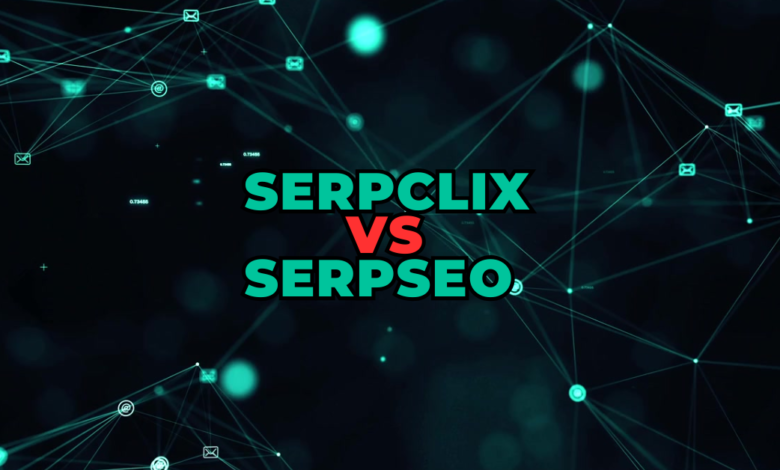SerpClix vs. SerpSEO: Which SEO Tool Boosts Rankings Faster?

In the competitive world of digital marketing, ranking higher on search engine results pages (SERPs) is crucial for driving traffic and increasing visibility. To achieve this, marketers often turn to tools like serpclix vs serpseo. Both platforms promise improved click-through rates (CTR) and higher rankings, but which one is the better choice? In this article, we compare SerpClix and SerpSEO, exploring their features, pros, cons, and overall effectiveness to help you make an informed decision.
What is SerpClix?
Serpclix vs Serpseo, SerpClix is a click-through rate (CTR) manipulation tool that helps websites improve their search engine rankings by driving real user clicks. It operates on a unique model where real people from around the world click on your website’s link in the search results, which signals to search engines that your content is relevant and valuable. This can result in higher rankings over time.
How Does SerpClix Work?
SerpClix uses a crowdsourced network of real users who perform searches and click on the target website’s link. The platform ensures that these users mimic natural browsing behavior by spending time on the page, scrolling, and even interacting with the content. This realistic user engagement sends positive signals to search engines, helping to improve the CTR and overall ranking of the website.
Pros and Cons of SerpClix
Pros:
- Real Human Clicks: Uses genuine users, which reduces the risk of being flagged as bot traffic by search engines.
- Improved CTR: Increases click-through rates, leading to better ranking signals.
- Geo-Targeting: Allows targeting of specific countries for more localized traffic.
- Easy to Use: The platform is user-friendly and requires minimal setup.
Cons:
- Costly for High Volume: It can get expensive for larger campaigns requiring thousands of clicks.
- Short-Term Boost: The ranking improvement may not be long-term if the content quality is not high.
- Limited Control: Users have limited control over who clicks on their links.
What is SerpSEO?
SerpSEO is a comprehensive SEO tool that focuses on optimizing on-page and off-page elements to boost search engine rankings. Unlike SerpClix, which primarily manipulates CTR, SerpSEO takes a more holistic approach by analyzing keywords, backlinks, and site structure to provide actionable SEO insights.
How Does SerpSEO Work?
SerpSEO uses advanced algorithms to analyze a website’s SEO health, including keyword density, backlink profile, and overall content quality. It also offers competitor analysis, helping users understand what their competitors are doing right and how to outperform them. The tool provides detailed reports and suggestions for optimization, making it a valuable resource for ongoing SEO strategies.
Pros and Cons of SerpSEO
Pros:
- Comprehensive SEO Analysis: Offers a complete overview of on-page and off-page SEO factors.
- Competitor Insights: Provides in-depth competitor analysis to identify opportunities for improvement.
- Keyword Optimization: Helps find high-performing keywords for better targeting.
- Cost-Effective: Generally more affordable compared to paying for clicks.
Cons:
- No CTR Manipulation: Unlike SerpClix, it does not manipulate click-through rates directly.
- Complex Interface: The platform may be overwhelming for beginners.
- Slower Results: SEO improvements take time and are not as immediate as CTR manipulation.
SerpClix vs. SerpSEO: Key Differences
| Feature | SerpClix | SerpSEO |
|---|---|---|
| Main Focus | CTR Manipulation | Comprehensive SEO Analysis |
| Method | Real user clicks | On-page and off-page optimization |
| Effectiveness | Quick, short-term ranking boost | Long-term SEO growth |
| Ease of Use | Simple and easy to set up | More complex and detailed interface |
| Cost | Higher cost for high click volume | More affordable for long-term use |
| Risk Level | Low risk due to real users | Low risk, white-hat SEO practices |
Which One Should You Choose?
Choosing between SerpClix and SerpSEO depends on your specific needs and goals:
-
Choose SerpClix if:
- You want a quick boost in CTR and rankings.
- You need to increase visibility for short-term campaigns or promotions.
- You have the budget to pay for real human clicks.
-
Choose SerpSEO if:
- You’re looking for long-term SEO growth.
- You want to optimize on-page and off-page SEO factors.
- You prefer a more comprehensive approach to digital marketing.
Final Thoughts
Both SerpClix and SerpSEO offer unique benefits and cater to different aspects of SEO. SerpClix is excellent for short-term gains through CTR manipulation, whereas SerpSEO provides a more sustainable and comprehensive SEO strategy. For the best results, many digital marketers choose to use both tools together, leveraging the strengths of each to maximize visibility and ranking potential.
In conclusion, the choice between SerpClix and SerpSEO ultimately depends on your budget, timeline, and marketing objectives. Carefully evaluate your needs and consider using them in tandem for a well-rounded SEO strategy.
FAQs
Q1: Can I use both SerpClix and SerpSEO together?
Yes, using both tools together can be a powerful strategy. SerpClix can provide immediate visibility through CTR manipulation, while SerpSEO ensures long-term SEO health and growth.
Q2: Is SerpClix safe to use for SEO?
Yes, SerpClix uses real human clicks, making it a safer option compared to bots. However, overuse or unnatural click patterns can raise red flags.
Q3: Which one is more cost-effective?
SerpSEO is generally more cost-effective for long-term use. SerpClix can be more expensive, especially for high click volumes.
Q4: How long does it take to see results with SerpSEO?
SEO is a long-term strategy, so results with SerpSEO may take several weeks to months, depending on competition and keyword difficulty.
Q5: Can SerpSEO improve my local SEO rankings?
Yes, SerpSEO offers geo-targeted keyword analysis and competitor insights, which can enhance local SEO efforts.



